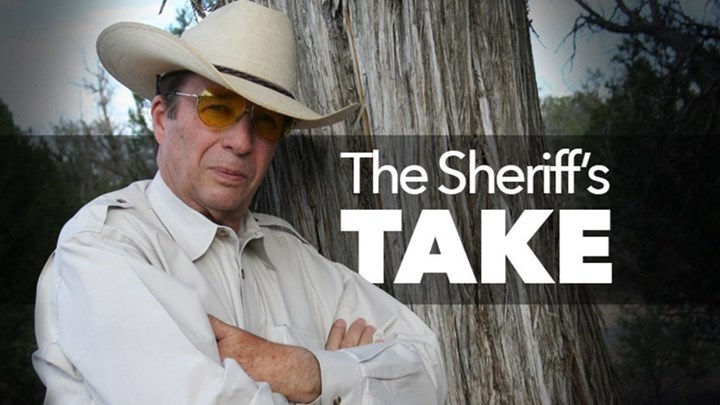
Most people who have been exposed to defensive shooting techniques have heard the little slogan, "Two to the body, one to the head, is guaranteed to leave them dead." Fewer shooters know this refers to a defensive shooting technique called the Mozambique Drill. But a large number of defensive students may be confused regarding the difference between the Mozambique and the Failure Drill. Well, as they say, here is the rest of the story.
From 1964 to about 1974, Mozambique was going through a serious difference of opinion called the Mozambican War of Independence. Mike Rousseau was one of the mercenaries hired to fight in that war. In the course of the conflict, Rousseau was engaged in the fighting at the airport in the city of Lourenco Marques (since renamed Maputo). During that scrap, Rousseau, armed only with a Browning Hi Power, rounded the corner of a building and came face to face with an enemy combatant armed with an AK-47.
Rousseau made a quick combat presentation with his pistol and planted two bullets in the area of his opponent's breastbone. In a fighter's worst nightmare, the soldier not only stayed on his feet, he managed to hang onto his rifle. Rousseau, having lowered his pistol to the ready position, assessed the situation and decided to deliver a third shot to the man's central nervous system. Aiming for the head, Rousseau either fired too soon or jerked the trigger, because his third shot hit his enemy in the throat. It did, however, sever the spinal column and neutralize the threat.
Sometime later, Rousseau made the acquaintance of Col. Jeff Cooper and told him about the incident. Cooper realized this would be a good training aid for his students and named the drill the Mozambique, after the country where the shooting occurred. By the late 1970s, Cooper had incorporated it into his training at the new Gunsite Academy.
In 1980, two SWAT officers from the Los Angeles Police Department, Larry Mudgett and John Helms, enrolled in the week-long 250 pistol class at Gunsite. Mudgett told me they were very impressed with the Mozambique Drill and could easily see how it would bring a close-range gunfight to a quick and successful end, minimizing the danger to police officers or legally armed citizens. Mudgett and Helms sought Cooper's permission to take the drill back to the LAPD and its officers.
However, as Mudgett pointed out, the name of the drill might be misconstrued as having racial overtones. He asked Cooper if he could be allowed to call it the Failure Drill, suggesting the third shot was the solution for when the first two shots failed to stop the attacker. Mudgett said Cooper graciously told him to call it whatever he liked, the important thing was to teach it. At this point, the Mozambique/Failure Drill consisted of firing two shots at center mass, lowering the pistol to the ready position and assessing the need for the third shot.
Mudgett and Helms taught the failure drill to fellow officers and a number of other police departments. However, they felt officers might be wasting too much time in coming to the ready position after the two center-mass shots—time that could easily get them killed. They modified the drill so the shooter kept the handgun on target after the first two shots and transitioned for the head shot if the threat was still viable.
There may be a number of reasons why two pistol rounds fail to get the job done. Certainly, the most obvious reason could be a criminal wearing protective body armor or such heavy clothing that the bullets do not penetrate sufficiently. Or, he might simply be so high on drugs, his body does not react quickly to the bullets. In a gunfight, the actual cause of the failure is secondary. Something must be done quickly to resolve the matter.
Bullets fired to the chest area of a criminal generally stop the attack by interrupting the flow of blood to the brain. However, in some cases criminals have taken heart shots, yet remained functional for several minutes—still posing a deadly threat to those around them. On the other hand, a bullet delivered to the head impacts the brain and central nervous system, turning things off immediately.
If this is the case, one might argue to simply forgo the chest shots and use head shots only. However, one would have to be very lucky—the head of a person in a combat situation is an erratically moving, relatively small target. Conversely, center-mass shots are much easier to make quickly.
The modern Failure Drill is accomplished by making a combat presentation to a target and firing two center-mass shots as quickly as those shots can be delivered into an 8-inch circle. Following the second shot, the shooter follows through and assesses his target. If it still presents a deadly threat, the third shot is delivered to an area between the eyebrows and the upper lip, an area of the skull where bone is thinnest.
The hard part of the Failure Drill, or the Mozambique Drill, is the first two shots should be fired as quickly as the shooter can center his hits. Then, he must slow down—just a bit—to deliver the head shot with precision. All of this is more difficult than it sounds. The Failure Drill is not just some combat shooting fad, nor even a catchy slogan; it is an extremely useful drill that, when practiced, will save lives.
Special thanks to retired LAPD officers Larry Mudgett and John Helms for allowing me to share this information with our readers.




































